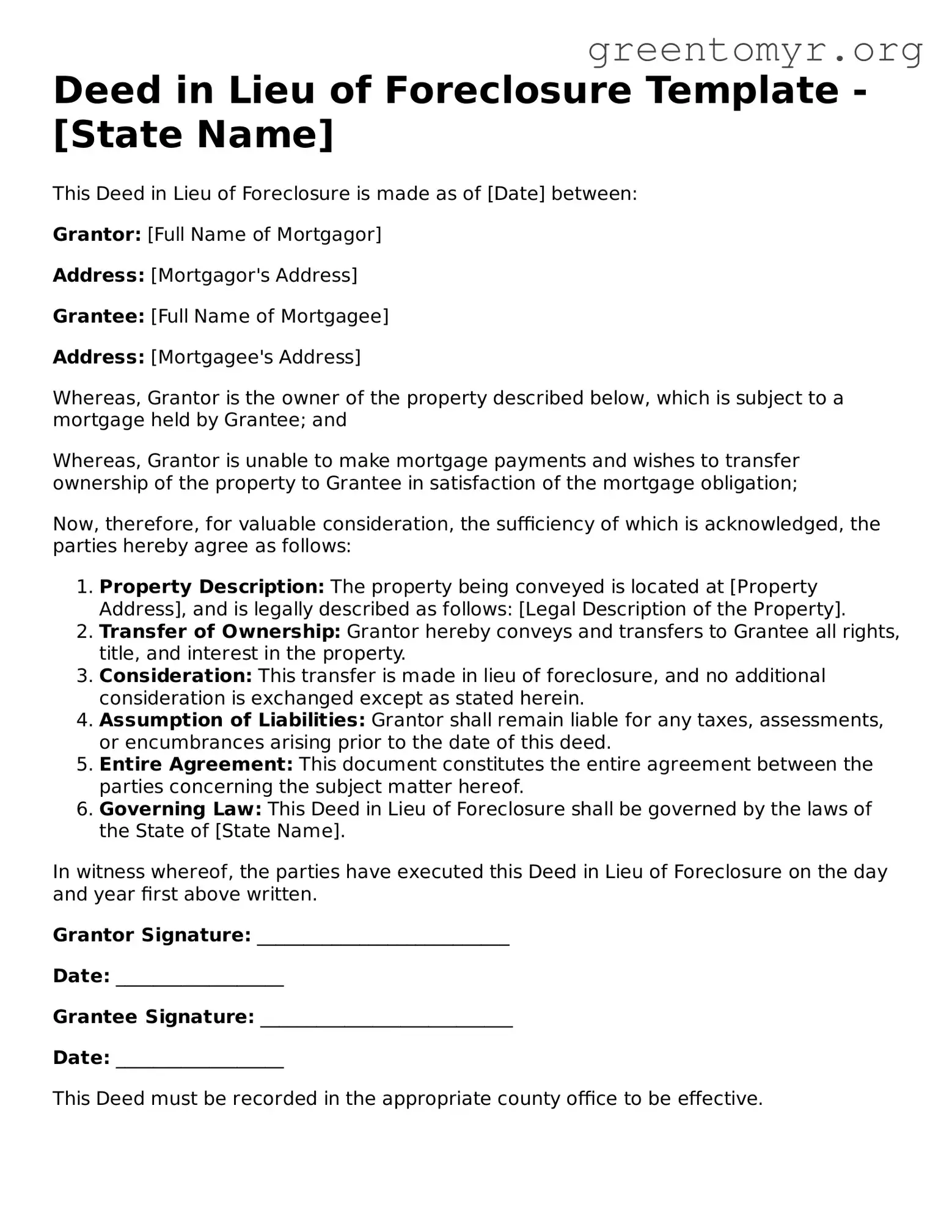Deed in Lieu of Foreclosure Template - [State Name]
This Deed in Lieu of Foreclosure is made as of [Date] between:
Grantor: [Full Name of Mortgagor]
Address: [Mortgagor's Address]
Grantee: [Full Name of Mortgagee]
Address: [Mortgagee's Address]
Whereas, Grantor is the owner of the property described below, which is subject to a mortgage held by Grantee; and
Whereas, Grantor is unable to make mortgage payments and wishes to transfer ownership of the property to Grantee in satisfaction of the mortgage obligation;
Now, therefore, for valuable consideration, the sufficiency of which is acknowledged, the parties hereby agree as follows:
- Property Description: The property being conveyed is located at [Property Address], and is legally described as follows: [Legal Description of the Property].
- Transfer of Ownership: Grantor hereby conveys and transfers to Grantee all rights, title, and interest in the property.
- Consideration: This transfer is made in lieu of foreclosure, and no additional consideration is exchanged except as stated herein.
- Assumption of Liabilities: Grantor shall remain liable for any taxes, assessments, or encumbrances arising prior to the date of this deed.
- Entire Agreement: This document constitutes the entire agreement between the parties concerning the subject matter hereof.
- Governing Law: This Deed in Lieu of Foreclosure shall be governed by the laws of the State of [State Name].
In witness whereof, the parties have executed this Deed in Lieu of Foreclosure on the day and year first above written.
Grantor Signature: ___________________________
Date: __________________
Grantee Signature: ___________________________
Date: __________________
This Deed must be recorded in the appropriate county office to be effective.
